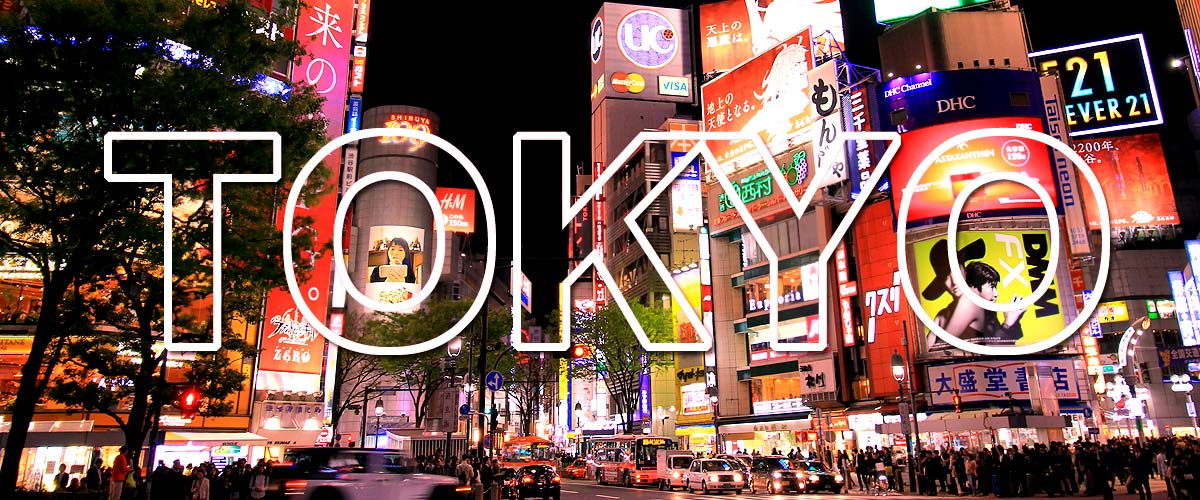
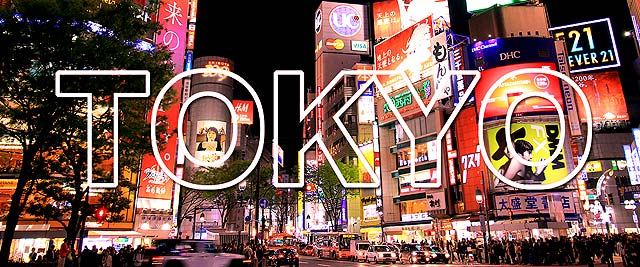

Shibuya is the shopping and entertainment district of Tokyo. Bright neon lights, giant advertising screens and youth culture create a lively atmosphere. Shibuya has a great nightlife especially on Friday and Saturday nights. A swirl of excitement develops when the traffic lights change and everyone rushes to cross the famous Shibuya Pedestrian Crossing. Department stores and high street fashion stores are open till late. Many shops close at 9pm. Further afield, Yoyogi Park and Meiji Shrine are spacious havens set in beautifully landscaped surroundings. Outside Shibuya station stands the Hachiko statue, a poignant memorial to an extremely loyal dog.
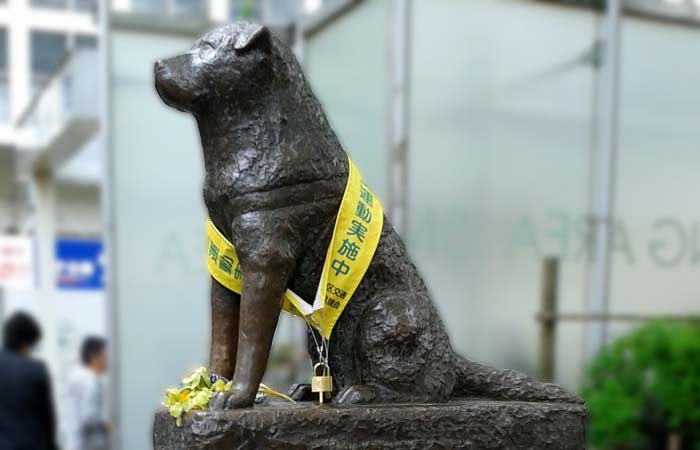
This is a favourite meeting point at Shibuya station. The Hachiko statue is in memory of an incredibly loyal dog, Hachiko. He waited every day at Shibuya station to meet his owner after he returned from work at the University of Tokyo. They would walk home together. Sadly, one day Hachiko went to Shibuya station and waited. There was no sign of his owner. For more than nine years Hachiko went to the station in hope. He was unaware that his owner died at work, never to return to Shibuya station and to his loyal dog again.
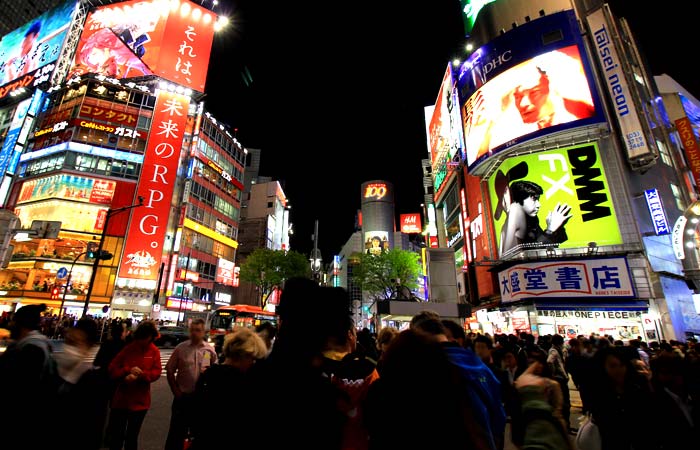
On a Friday or Saturday night, experience the essence of Tokyo. Senses are heightened with the bustle, bright lights and buzzing energy. An adrenaline rush builds in anticipation of walking across the famous Shibuya pedestrian crossing. Hundreds of people wait to cross in several directions at the same time. The traffic lights change and the fun begins. People rush to the middle of the road trying to take photos, videos or just to be in the centre of this mass movement. Others dance their way to the other side as they avoid bumping into each other. In a few minutes, everyone has made it across one of the busiest crossings in the world.
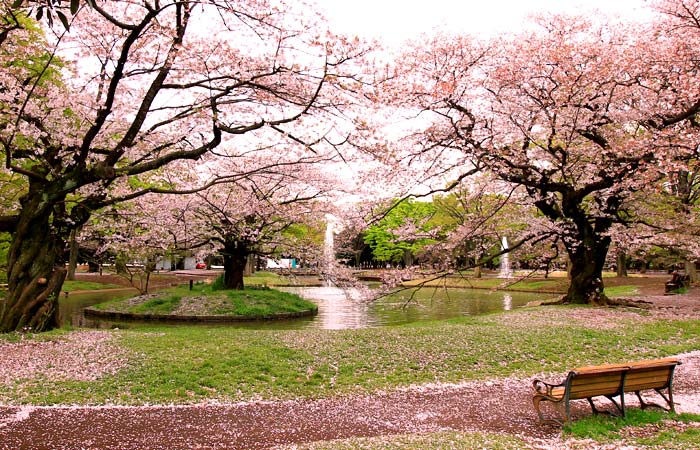
Many events occur in the south side of Yoyogi Park at the open-air stage and plaza. But in the gardens the pace slows down. It is so tranquil. This was my first experience of sakura (cherry blossom) in Japan. A man played relaxing melodic music under a cherry blossom tree near the pond. Delicate pink and white blossoms covered the ground, almost snow like in appearance. Hardly anyone was around. The ambience was truly magical, picturesque and serene.
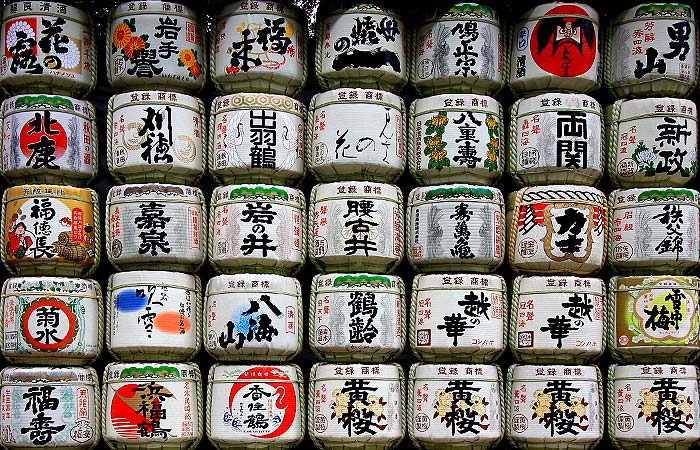
Made of solid 1500 year old cedar wood, stands the 12 metres high grand torii gate, one of the largest in Japan. The powerful structure towers above. A path leads to the Meiji Shrine, surrounded by lush green forest and lined with stone lanterns. Rows of sake barrels embellished with calligraphy and vivid designs are displayed en route to the Meiji Shrine. Every year, sake barrels are offered to the deities to show respect to Emperor Meiji and his wife, Empress Shoken. Meiji Shrine is dedicated to them. Beyond the inner gate, in the main courtyard, resides the elegant wooden Meiji Shrine. Nearby, a majestic camphor tree encircled with racks full of tied wooden prayer boards (ema) carries the hopes and wishes of visitors.

Shinjuku is the business district and administrative centre of Tokyo. Great panoramic views of the city can be seen from the Tokyo Metropolitan Government Building. Uniquely designed architecture highlights Tokyo’s commercial success. Large green open spaces of Shinjuku Gyoen’s landscaped gardens are an oasis of calm. Streams of people head towards Shinjuku station, the busiest station in the world.
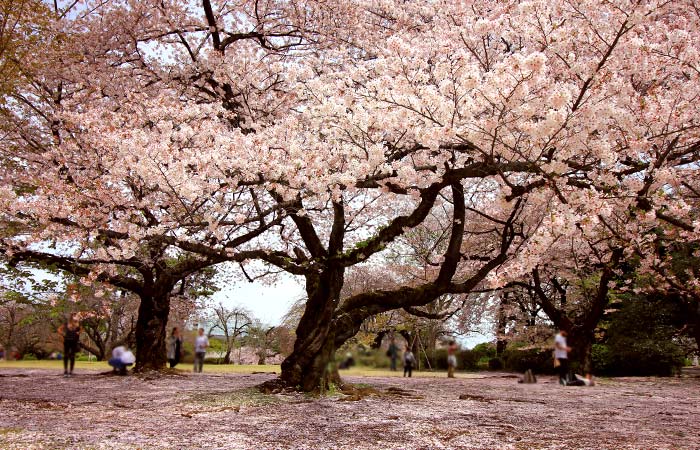
An overwhelming feeling of joy warms your heart as you walk under more than 1000 cherry blossom trees in the Cherry Area and English Garden. Soft blossom petals gently fall to the ground. Sounds of laughter and chatter are carried by the wind as groups celebrate sakura (cherry blossom). Manicured lawns in the English Garden, structural sycamore trees in the French Formal Garden and tea houses in the Japanese Traditional Garden take you on a horticultural journey. Iconic skyscrapers provide a dramatic backdrop to Shinjuku Gyoen’s scenic landscaping.
env.go.jp/garden/shinjukugyoen/english/index.html
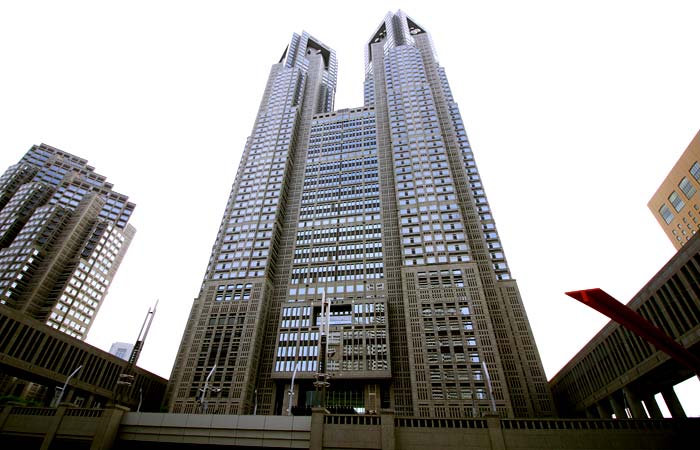
Enjoy amazing panoramic views of Tokyo for free, from a magnificent height. The Tokyo Metropolitan Government Building is an architectural landmark with two towers. Each tower has an observation deck for visitors, accessed via lifts from the ground floor. In less than a minute the lifts zoom up to the 45th floor, reaching the height of 202 metres. South and north observatories have amazing views. There are also gift shops and cafes.
metro.tokyo.jp/ENGLISH/OFFICES/observat.htm
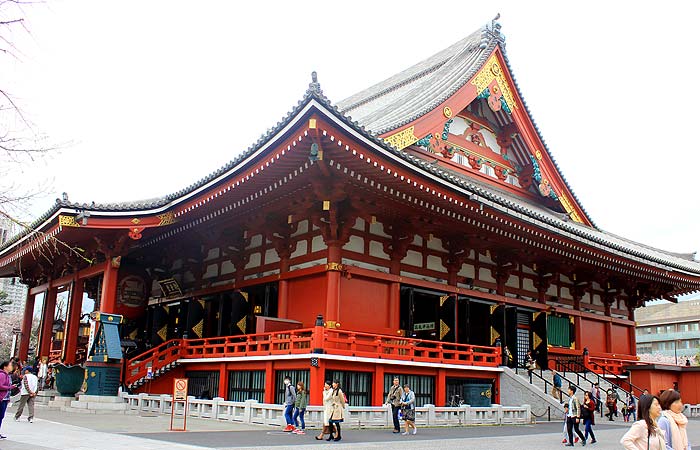
The old temple district has a relaxed ambiance. On either side of the Sumida River is Sumida Park, a pretty picnic spot. Tokyo Sky Tree and the Asahi golden flame are architectural showstoppers. The main attraction is the amazing Sensoji Temple. Dominating Sanmon Gates decorated with bold red lanterns welcome visitors to the central grounds.
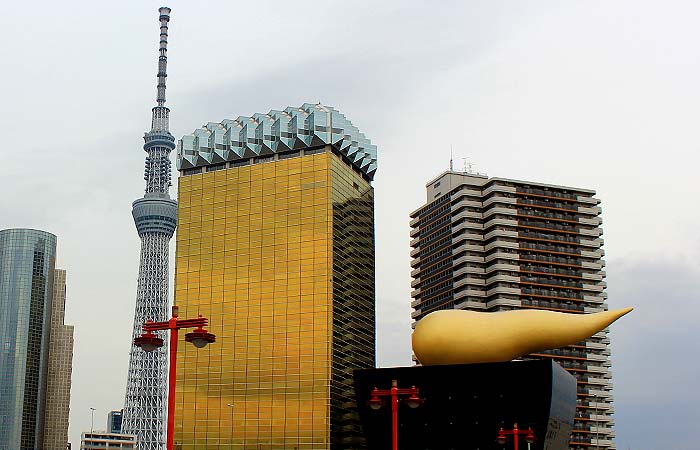
Sumida Park is situated on both sides of the Sumida River with rows of cherry blossom trees. Boat rides are available along the river. Enjoy the great views of the Tokyo Sky Tree and the golden ‘Asahi flame’.
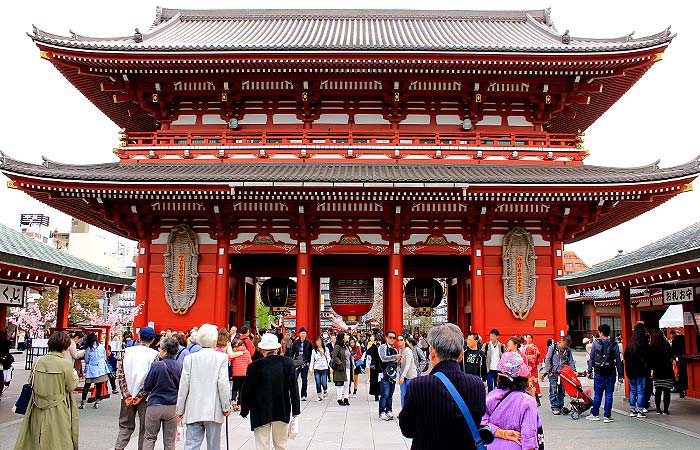
Dramatic gates beckon you into Tokyo’s oldest temple, completed in 645. The Kaminarimon Gate (Thunder Gate), one of the main entrances to Sensoji Temple has a prominent dangling red chochin (lantern) with bold black calligraphy. Inside is a bustling Nakamise shopping street where vendors sell snacks and souvenirs. Ahead, stands the inner gate, Hozomon Gate. Two massive 4.5 metres high straw sandals are on either side, called Owaraji. 800 people made the sandals in a month. Visitors touch them for good luck. Nearby, the grand red five-storey Pagoda towers above. Crowds flock to Sensoji Temple’s Main Hall. The iconic red lantern hangs in the centre above the stairs in all its glory. Visitors, as a form of respect and in prayer, bow their heads, clap three times and drop coins in a box.
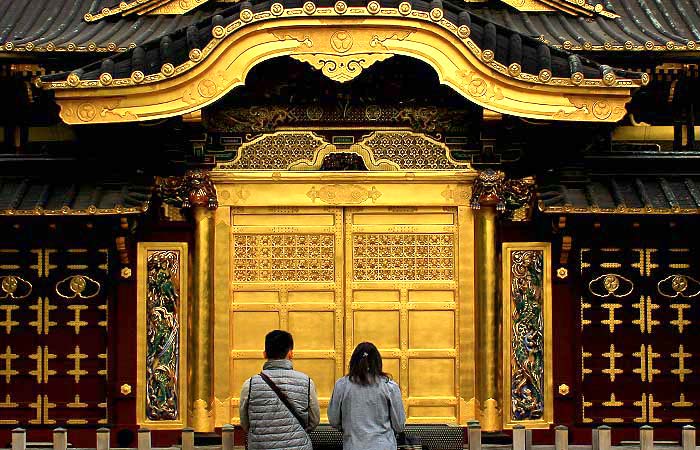
Ueno Park is full of community spirit during hanami (cherry blossom viewing). Crowds of people gather for the Spring Festival. This vast park has a zoo, lotus pond, art museums, temples, pagoda and 1000 cherry blossom trees. Paths are marked to designate spaces for picnic areas. Groups of friends meet and celebrate spring with their bento boxes and drinks in hand. Hanging illuminated lanterns line the paths. There is a joyous festival atmosphere. Down a side lane are food stalls that lead to copper lanterns and the richly decorated golden Karamon Gate of Toshogu Shrine. Nearby, a monument holds the original flames from Hiroshima and Nagasaki.

Enter the East Gardens via the Otemon Gate and moat. Huge stone walls, remnants from the Edo Castle walls lead you into the gardens. Sannomaru Shozokan, the Museum of Imperial Collections, showcases a selection of paintings, pottery, statues and lacquered furniture. Tokyo Imperial Palace is the residence of the Emperor’s family. Tours of the grounds can be booked in advance via the Imperial Household Agency.
Advance booking sankan.kunaicho.go.jp/english/index.html

In the centre of Tokyo is Japan’s largest congress centre. Tokyo International Forum’s 14 floors include eight halls, exhibition spaces, a lobby, restaurants and cafes. Conferences and art events are held in this social hub. The building's design is impressive. Light floods through the lobby’s captivating glass architecture and enhances the visually dramatic steel contours.

Ginza means silver gild, as the government moved its silver coin mint to this area. Now, Ginza is adorned by chic designer boutiques. Walk along the streets to see amazing architecture. De Beers Diamond Jeweller’s steel and glass building bends like a wave, flowing upwards. The design of Mikimoto resembles paper cut outs obscuring a glass facade. Louis Vuitton’s shop has a metallic lattice effect similar to woven fabric. Department stores, restaurants and a huge 12-storey Uniqlo flagship store are also in the Ginza area.
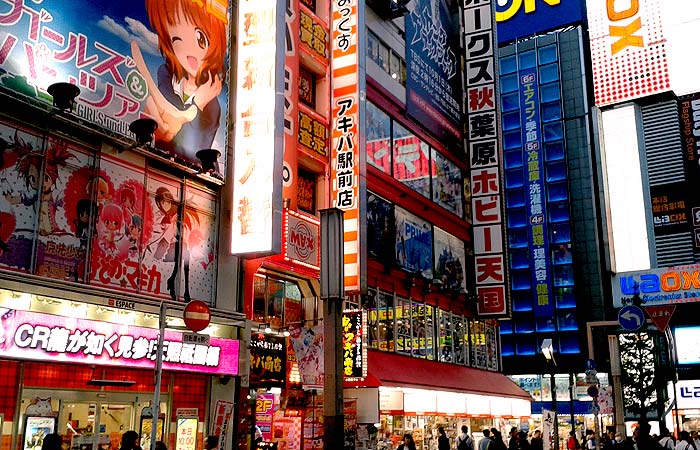
Welcome to Electric Town. Electronics and gaming are synonymous with Akihabara. Loud promotions, mega game brands and anime murals compete for attention. Shelves are packed with the latest gadgets and gaming software. Buy your own robot or assemble one. Akihabara is a treasure trove of tech.

Studio Ghibli is an animation studio which produces fascinating stories and hand drawn illustrations. Films include Spirited Away and Howl’s Moving Castle. No photos are allowed inside so soak up as many magical moments in your memory as possible. The Studio Ghibli adventure begins when you board the Ghibli painted bus from Mitaka station. Exchange your voucher at the museum for an original piece of film strip. Inside are wonderful 3D animated displays and recreated artists' studios. Flick through research files, painting samples and preliminary drawings. See the whole process from an idea to final film production. There are children’s play areas, glimpses into future animation projects and a short animation especially for visitors. Get spirited away by the magic of imagination and animation.
Ticket availability: 200 per day for overseas bookings, 3 months in advance and sells out quickly. Book through specific agencies.
ghibli-museum.jp/en/